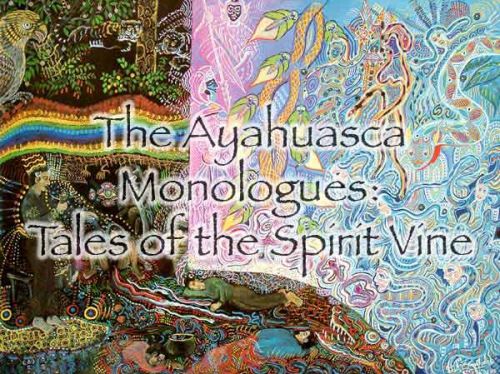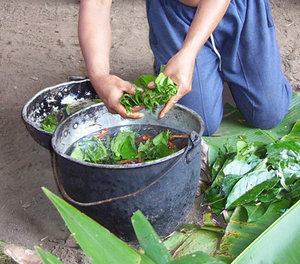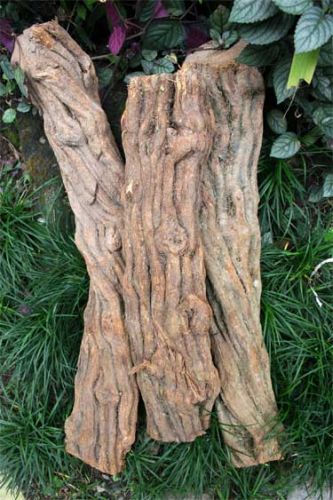 If you know nothing about ayahuasca, you should read Gina Piccalo's lengthy and detailed piece about it in the Los Angeles Times Magazine. Ayahuasca is a shamanistic therapy that uses psychotropic plants native to the Amazon. If you are looking for any updates on its legality or any new angles on its use, the article probably won't help you much.
Piccalo begins by introducing the reader to Lobo Siete Truenos, a young medicine man who is conducting all-night spiritual ceremonies for wealthy suburbanites in Southern California:
If you know nothing about ayahuasca, you should read Gina Piccalo's lengthy and detailed piece about it in the Los Angeles Times Magazine. Ayahuasca is a shamanistic therapy that uses psychotropic plants native to the Amazon. If you are looking for any updates on its legality or any new angles on its use, the article probably won't help you much.
Piccalo begins by introducing the reader to Lobo Siete Truenos, a young medicine man who is conducting all-night spiritual ceremonies for wealthy suburbanites in Southern California:
If all goes as planned, Truenos' nine participants--all seeking his psychedelic "doctoring"--will sip a murky, foul-tasting potion and then wait, eyes closed in the dark, for it to take effect. Wooziness may be followed by nausea, then probably vomiting. For many, a kaleidoscopic array of geometric patterns could emerge. Others may be greeted by friendly plant-like creatures, gnomes, elves or even a giant anaconda--known by indigenous tribes as Mother Ayahuasca, omniscient ruler of the plant kingdom--who communicates telepathically. And the really lucky ones may be treated to a cinematic review of their lives, each scene illustrating a moral failing. . . .
The concoction itself is said to taste so vile that most people fight their gag reflex to swallow it. Devotees liken the flavor to forest rot and bile, dirty socks and raw sewage. Vomiting is so common that indigenous shamans often refer to the ceremony as la purga, or the purge. And ayahuasca can severely test the commitment of its followers: The potion often reveals its celebrated wisdoms only after repeat encounters. The payoff, adherents say, can be life-altering. Debilitating illnesses such as chronic depression or addiction may disappear after just one session, some say. Others say they shed their egos for a night, finally seeing their lives with a startling clarity.
Piccalo explains that ayahuasca, meaning "vine of the soul" has been used for hundreds of years or more by tribes in Central and South America. In countries where it is legal, pilgrims flock to ceremonies. She notes that Allen Ginsberg and William S. Burroughs introduced the plant concoction to pop culture in the 1960s but that it has remained a largely underground phenomenon -- until now. A community shepherded by shamans is emerging in the United States, she writes.
Learning about the drug makes it sound somewhat similar to LSD and psychedelic mushrooms. One practitioner is quoted saying ayahuasca, like, shifts your reality and could bring world peace if everyone did it. So it was nice that Piccalo gets some broader perspective:
Journalist Erik Davis, a longtime chronicler of emerging religious practices and author of the 2006 book "Visionary State: A Journey Through California's Spiritual Landscape," gives Harris' comments more context. "For a variety of reasons," Davis says, "with some negative side effects, ayahuasca has been able to enter into Western culture in a way that preserves a ritual format and a spiritual intention and gives it a much more potentially transformative effect. Psychedelic mushrooms can take you just as far out, but the way they've been adapted by Westerners has been more informal, which means they have the potential to be used in much more erratic ways."
Unfortunately, the religious component of ayahuasca isn't really explored. Most of the piece deals with Truenos, who comes off more Elmer Gantry than devout believer. He has a shady past and can't answer Piccalo's questions in a straightforward manner. In an area where New Age practitioners have found fertile ground for preying on the wealthy, he seems perfectly Californian.
And while the religious aspects aren't explained, Piccalo does explain previous legal rulings that ban one of the substances while permitting their use for religious ceremonies. Truenos does have some particular religious views -- not universally held by ayahuascan practitioners -- such as that the Divine Mother is laying the groundwork to prepare the developed world for the great coming age of humanity.
 One of the funniest parts of the article was Piccalo's repeated contention that ayahuasca is for smart people. She says it's used by "liberal thinkers," "academics, journalists, psychiatrists and other soul-searching intellectuals," "East Coast writers," and the "intelligentsia." I love how when rich people seek out pharmacological escape it's treated as so transcendentally different than when people in different social classes do the same. Piccalo does ask Truenos about his ministry in this regard:
One of the funniest parts of the article was Piccalo's repeated contention that ayahuasca is for smart people. She says it's used by "liberal thinkers," "academics, journalists, psychiatrists and other soul-searching intellectuals," "East Coast writers," and the "intelligentsia." I love how when rich people seek out pharmacological escape it's treated as so transcendentally different than when people in different social classes do the same. Piccalo does ask Truenos about his ministry in this regard:
All this heavy-duty mysticism is more than a little incongruous amid the nouveau wealth of Encinitas. But he deflects any suggestion that by "doctoring" the wealthy he's neglecting the needy.
"We live in different times than our predecessors," Truenos says. "There has been a promise throughout every culture that there would be a moment in humanity's history where we would have social and economic justice. One of the things the fire altar states is that this day that has been promised has arrived, and so with it all of the various hallmarks are sure to be emerging in humanity. This includes a spiritual solution to humanity's economic problems so there isn't a disparity between the poor and the wealthy."
I actually don't think it's Piccalo's fault -- I would like to blame Truenos -- but what I kept wanting answered in the article is what exactly is religious about the practice and how exactly it helps people. One user says it made him a better father and husband but nowhere do we learn how that happened.
Piccalo takes a Western perspective on the practice, trying to flesh out whether it might have "legitimate" medical uses and mentioning an academic who thinks that all primitive cave drawings came about because of the use of hallucinogenics. She speaks with the editor of Skeptic magazine who attempts to debunk its religious properties.
A much better piece on ayahuasca can be found in the March 2006 National Geographic. Kira Salak writes about her second experience with the ritual. Her first one involved her conquering wailing, shadowy, evil figures. It cured her of debilitating depression but she wanted help with other problems as well. So she heads back:

I've told no one this time--especially not my family. I grew up among fundamentalist atheists who taught me that we're all alone in the universe, the fleeting dramas of our lives culminating in a final, ignoble end: death. Nothing beyond that. It was not a prescription for happiness, yet, for the first couple decades of my life, I became prideful and arrogant about my atheism, believing that I was one of the rare few who had the courage to face life without the "crutches" of religion or, worse, such outrageous notions as shamanism. But for all of my overweening rationality, my world remained a dark, forbidding place beyond my control. And my mortality gaped at me mercilessly.
Her second experience is harrowing and it's a very interesting read. She explains the effect of the concoction from a Western perspective but also shares the perspective of its religious adherents:
To prepare the brew, apprentices spend years under the tutelage of an elder shaman getting to know the different plant ingredients, passing weeks or months at a time learning their individual healing properties and governing spirits. These beings, they claim, teach them icaros, or spirit songs, which, when sung or whistled, call forth the plants' unique assistance during ceremonies. The training isn't easy; those like Hamilton who earn the title of "master shaman"--highly respected members of Amazonian communities--receive patients from far and wide. Based on the individual needs of their patients, shamans must know which plants are required for a ceremony (there are two primary ingredients, but any of an estimated 100 species have been used in ayahuasca brews), how much of them to harvest, and how to prepare them for ingestion. The plants' spirits are then said to work together to produce the most successful possible healing for each person, regardless of what ails them. . . .
Shamans will tell you that during an ayahuasca cleansing they're not working with the contents of a person's hallucination but are actually visiting that person in whatever plane of reality his or her spirit happens to be. We are not, they insist, confined to the reality of our five senses, but can transcend it and enter a multidimensional universe.
Salak's writing is refreshing and thorough and you should read the whole piece. Piccalo's article is a good introduction to ayahuasca, and she captures that segment of users who are more Burning Man than religious adherent. Still, I hope that future mainstream stories don't shy away from the religious, er, ghosts.
